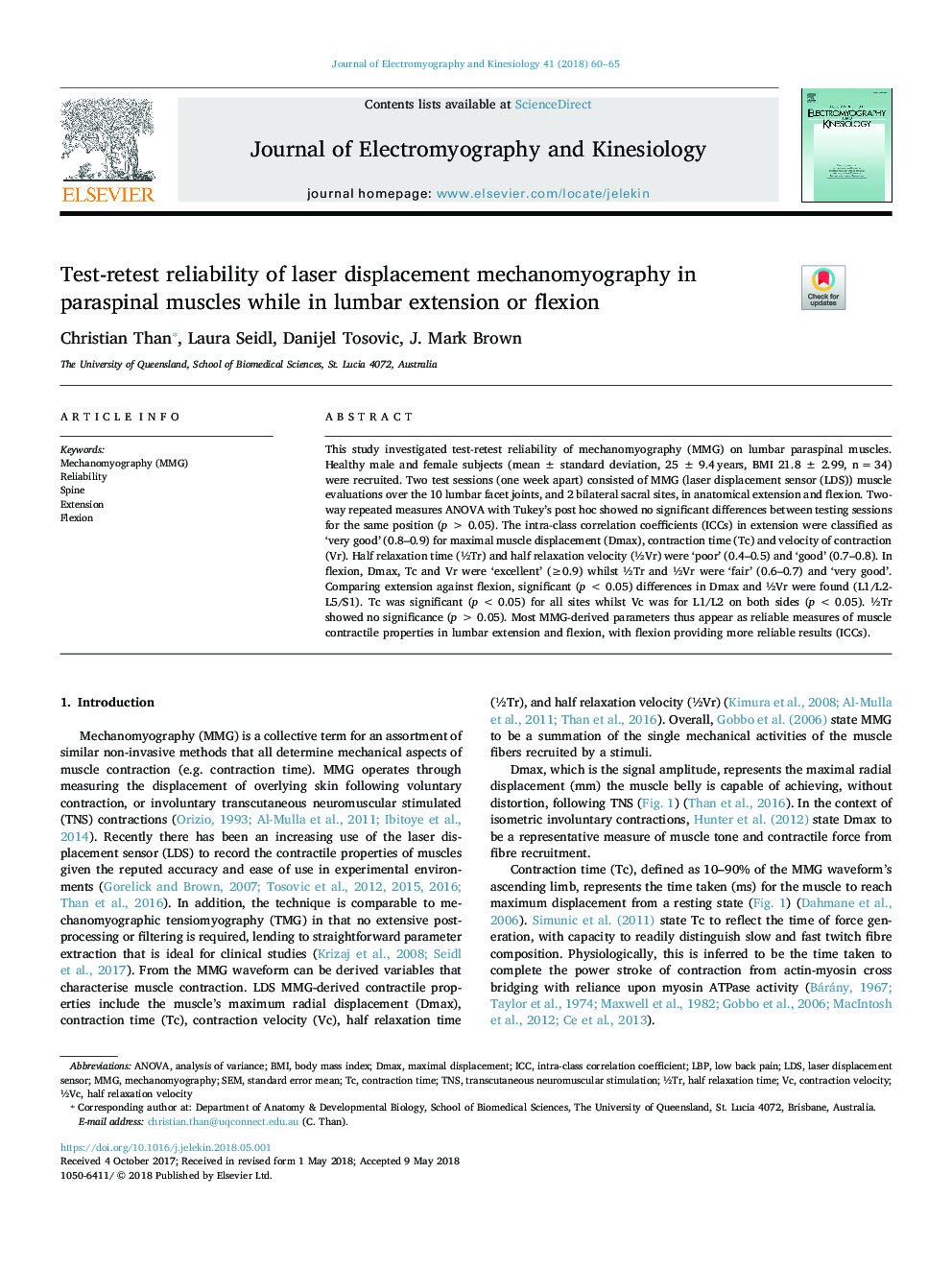| Article ID | Journal | Published Year | Pages | File Type |
|---|---|---|---|---|
| 8799752 | Journal of Electromyography and Kinesiology | 2018 | 6 Pages |
Abstract
This study investigated test-retest reliability of mechanomyography (MMG) on lumbar paraspinal muscles. Healthy male and female subjects (meanâ¯Â±â¯standard deviation, 25â¯Â±â¯9.4â¯years, BMI 21.8â¯Â±â¯2.99, nâ¯=â¯34) were recruited. Two test sessions (one week apart) consisted of MMG (laser displacement sensor (LDS)) muscle evaluations over the 10 lumbar facet joints, and 2 bilateral sacral sites, in anatomical extension and flexion. Two-way repeated measures ANOVA with Tukey's post hoc showed no significant differences between testing sessions for the same position (pâ¯>â¯0.05). The intra-class correlation coefficients (ICCs) in extension were classified as 'very good' (0.8-0.9) for maximal muscle displacement (Dmax), contraction time (Tc) and velocity of contraction (Vr). Half relaxation time (½Tr) and half relaxation velocity (½Vr) were 'poor' (0.4-0.5) and 'good' (0.7-0.8). In flexion, Dmax, Tc and Vr were 'excellent' (â¥0.9) whilst ½Tr and ½Vr were 'fair' (0.6-0.7) and 'very good'. Comparing extension against flexion, significant (pâ¯<â¯0.05) differences in Dmax and ½Vr were found (L1/L2-L5/S1). Tc was significant (pâ¯<â¯0.05) for all sites whilst Vc was for L1/L2 on both sides (pâ¯<â¯0.05). ½Tr showed no significance (pâ¯>â¯0.05). Most MMG-derived parameters thus appear as reliable measures of muscle contractile properties in lumbar extension and flexion, with flexion providing more reliable results (ICCs).
Keywords
Related Topics
Health Sciences
Medicine and Dentistry
Orthopedics, Sports Medicine and Rehabilitation
Authors
Christian Than, Laura Seidl, Danijel Tosovic, J. Mark Brown,
